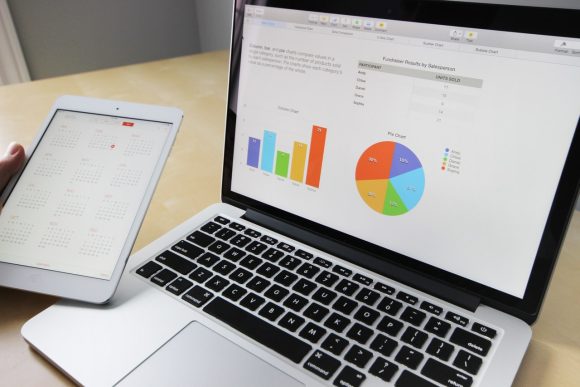Creating surveys requires careful consideration into the questions you’re asking, how you’re distributing them, how you’re collecting responses, the volume of responses, and how deeply you want to analyse your data.
It can be quick and easy or require some time and effort, depending on your needs.
For most businesses, research is needed to find a survey platform that can cope with your demands.
Identify your goals
To create a survey, you need to identify who your target audience is, why you want to get their feedback, and what the result of that feedback will be.
Most projects start with a ‘mission statement’ – such as wanting to find out how employees have adapted to working from home, or how satisfied customers are shopping in your store.
Ultimately, the goal will be to improve your product or services for customers to keep them coming back, or to create an engaging working environment that results in a high employee retention rate.
Identify your target audience
Knowing your target audience plays an important role in devising your strategy.
For example, if you are surveying school children, you should make the survey short and simple with easy-to-understand language. There should also be imagery used to make the survey more engaging.
You should also consider that – if they are filling in the survey online – then they will probably be filling in the survey at the same time during a lesson. This means you need a hosting system capable of processing a high volume of responses all at once.
Choose between online and offline surveys
Most survey platforms (including ours) let you distribute online surveys by sharing a link on a website, email, social media accounts, SMS or by QR code.
The participant will be directed to a webpage that hosts the survey.
These online surveys can be accessed by smartphones, computers, and tablets, where people can fill in the survey through their devices.
The benefit of online surveys is they are cost-effective, can be shared instantly from any location, and can be filled in remotely.
With the right platform, there will be analysis features that break down the feedback into instant summaries and deep-dive reports; helping you understand the key stories in your data.
For offline surveys, paper still represents an excellent way to gather feedback.
As well as being cost effective, paper surveys are great for reaching those without access to smartphones or computers.
They also offer a personal touch. We all know what it’s like to wake up to an inbox full of marketing emails, and sometimes a survey can get lost in the pile. But when a paper survey is handed to you, or it is posted through your letter box, it is much harder to ignore.
With Snap XMP (the next-generation platform from Snap Surveys) you can even scan your paper survey results into the platform, enabling the use of online survey analysis features.
So, while paper surveys may seem a little outdated, they definitely still have their place!
Online surveys when you can’t get a connection
Our offline interviewing app, Snap Offline Interviewer, lets you run an online survey even when you’re unable to connect to the internet.
This is perfect for when you’re out canvassing door-to-door or visiting premises to conduct surveys, audits, and spot checks.
The app syncs automatically once you get online – and all the feedback you collected in the field is ready to be analysed!
Design your questionnaire
Once you’ve chosen your survey platform, it’s time to put the questionnaire together.
Most surveys should be a quick, slick, and straight forward process to fill in; otherwise, people may abandon the survey. The more responses, and the more engaged respondents are to answer the survey properly, the better the feedback will be.
One way of achieving this is using rating scale questions – whereby people select how much they ‘agree’ or ‘disagree’ with a statement.
Here’s an example of one.
“I have all the equipment I need to perform my role remotely.”
- Strongly disagree
- Disagree
- Neutral
- Agree
- Strongly Disagree
It’s easy to understand and easy for respondents to select their choice.
The benefit of this type of question is for analysis. A capable survey platform can compile your results and present a breakdown of the feedback.
For example: 78% of your employees “agree” or “strongly” agree they have all the equipment they need to perform their role remotely.
This makes is clear that your business is doing a good job of providing equipment and you can continue with your current way of working.
It’s a little more time-consuming for open-ended questions to be interpreted for analysis, as someone will have to physically read each response.
However – open-ended questions give respondents the chance to speak freely.
You can learn much more about their thoughts and feelings if you give them the chance to write feedback without restriction, so it’s always a good idea to have at least a few answer boxes that invite their opinions.
Usually this is done by asking “Do you have anything else you’d like to share?” near the end of the survey.
Making your surveys engaging
As well as the type of questions you ask, you should also consider other ways to make your survey more engaging.
One of the ways of doing that is using imagery.
For example, if a travel company is asking what countries a person has been to, the answer options can be graphics of flags or landmarks.
France could be a graphic of the Eiffel Tower, London could be Big Ben, New York could be the Statue of Liberty etc.
The respondent can press the image to select their answer. This makes it interactive, stimulating and easy on the eye – which all play a part in encouraging better response rates.
You can also provide audio options so that people can hear questions being read aloud.
This is especially important for people who may be blind or visually impaired.
Relevant questions
People may be very quick to abandon the survey if they feel you aren’t asking relevant questions.
You might have a reason for this (like asking them personal questions to build up a customer profile) but if the respondent doesn’t understand why you’re asking or what relevance the questions have, they can become disinterested and distrusting.
Which leads us into our next point.
Explain why you’re asking for feedback
Human beings are pretty good natured at heart. If you tell us why you want our feedback, we’re more likely to give it to you.
The intro of your survey should explain what the survey is about and why you want that feedback.
Is it to improve the quality of your food delivery service? To improve the layout and product offering of your store? Or maybe to improve the employee experience in your organisation?
Let them know!
Branding your surveys
Another way to encourage people to respond is to put your company name and logo over your survey.
And you can go one step further and have a custom URL survey link so that people recognise the brand name when they receive the link.
Such as: survey@yourorganisation.com
People are much more security conscious online now and are aware of the dangers of clicking random links.
You can build trust by branding and customising your survey. And don’t forget to personalise any emails you send – people are more likely to open an email if it’s from a brand they recognise and if their name is in the subject line!
In fact, open rates increase by 18% when a subject line is personalised.
Check out our blog on 11 tips for your digital experience strategy for more information on this.
Accessibility
As we’ve just touched on, surveys should be open to everyone – regardless of any disability they may have.
It’s also a legal requirement for certain sectors in the UK.
Captions should accompany audio for those who may be hearing impaired or in a noisy environment (like an internet café). Text should be able to be made larger so that it’s easy to read. Even colour schemes should be researched so that they fit accessibility guidelines.
Check out this article for more on web accessibility.
Repeat the survey over time
By running a survey consistently, you can monitor changes to feedback each time. Once feedback is acted upon, running the survey again 6 months down the line will help you evaluate if the changes you made are having an effect.
It can provide a commentary in real time to give context to other things you may be seeing.
For example, if your customer approval rating has gone up over the last year, it may coincide with when a new product was offered. If it’s gone down over time, it could be related to when your business cut costs and had fewer staff on shift – causing frustration to customers.
Consistency is required to enable you to see the bigger picture.
If you choose a survey platform with adept analysis capabilities, you can benchmark survey results to the previous year with ease.
Ready-made surveys available for free
The Snap Surveys Marketplace is offers pre-built survey solutions that can help get your project running today.
From surveys about workplace stress to customer satisfaction, we’ve done the hard work for you.
Featuring a range of questions and one-click summary reports to help you truly understand your feedback.
We have built the questionnaire, which allows you to select the questions that best suit your needs. Each tool also contains pre-built reports that not only saves you time, but ensure key findings are clearly highlighted.
All at the click of a button! Free for small businesses.
Click below to check out the Marketplace. More will be an added so be sure to keep checking back.
If you are looking for a certain type of survey that we don’t offer, just let us know and maybe we can help.
Need help? Talk to us
If you need feedback but aren’t sure where to start, we’d love to help!
We have been a market-leading survey platform since 1981 and even have a dedicated team on hand to run projects for clients. Our head office is in Bristol, UK, and we also have an office on the East Coast of the USA.
We’re a proven asset for researchers, organisations, and businesses that require a secure platform that can deliver great feedback that drives action.
Our friendly team is here to help. Just email sales@snapsurveys.com or call 1-603-610-8700.
Thanks for reading! Good luck with your surveys.



